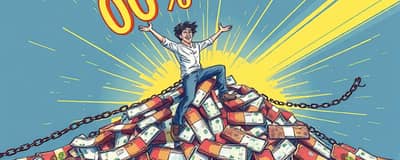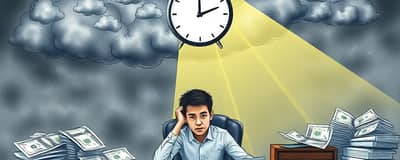Credit card statements arrive each month like a ticking clock, reminding us of balances that never seem to shrink. You glance at the minimum payment line and breathe a sigh of relief, believing you’ve honored your obligation. But that small check you write comes with a hidden price—one that can haunt you for decades.
In this article, we unravel how the allure of the minimum payment conceals a debt trap, and we equip you with strategies to reclaim control of your financial future.
Understanding the Minimum Payment Trap
The minimum payment is typically calculated as 1–3% of your outstanding balance or a fixed dollar amount—often between $25 and $35—whichever is higher. On the surface, this seems like a lifeline: you avoid late fees, protect your credit history, and maintain account standing.
However, compound interest that never sleeps ensures that most of your minimum payment goes toward interest charges, not your principal balance. With average APRs ranging from 18% to over 25%, that small monthly obligation barely makes a dent.
The True Cost Over Time
Consider a $5,000 balance at an 18% APR. By paying only 2% of the balance each month—about $100 at the start—it can take over 20 years to clear the debt. Along the way, you might pay more than $7,000 in interest, effectively more than doubling the original cost of your purchases.
Below is a comparison of paying only the minimum versus clearing the full balance each cycle:
Beyond Interest: Credit Scores and Well-being
High credit utilization ratios—balances compared to your credit limits—account for up to 30% of your credit score calculation. When you maintain large balances by making only minimum payments, your utilization stays elevated, which can drag down your score even without late payments.
Moreover, there’s an emotional toll. Debt hanging over you can lead to sleepless nights, strained relationships, and a sense of helplessness that bleeds into every aspect of life.
- snowballing debt and interest charges sow anxiety and limit opportunities.
- High utilization ratios can prevent borrowing for a home or car.
- Prolonged debt reduces ability to save for emergencies.
- Persistent financial stress harms mental and physical health.
Why Lenders Love Low Minimums
Financial institutions set minimum payments deliberately low. This intentional low minimum payment traps borrowers into lengthy repayment plans that generate maximum interest income for credit card issuers.
Every month you pay a small amount, you’re effectively extending your relationship—and the bank’s profit margin—by years. The cycle is engineered to keep you paying interest, not to help you become debt-free.
Breaking the Cycle: Practical Strategies
Escaping this trap requires more than good intentions. It demands a proactive approach and disciplined financial habits. Below are steps you can adopt immediately:
- Develop a strict budget that prioritizes extra debt payments.
- Negotiate with your issuer for a lower APR or hardship plan.
- Consider a balance transfer to a 0% introductory APR card.
- Explore debt consolidation loans to secure a fixed, lower rate.
- Increase your monthly payments by a set amount each quarter.
By committing just an extra $50 or $100 per month, you can cut years off your payoff timeline and save thousands in interest.
A Real-Life Story of Triumph
Meet Olivia, a graphic designer who racked up $8,000 in credit card debt early in her career. For years, she made minimum payments, feeling relieved each month that she avoided late fees. But after a wake-up call—her interest payments eventually outpaced her rent—she decided enough was enough.
Olivia drafted a strict spending plan, sold unused possessions, and shifted her balances to a card with a 0% introductory APR. By doubling her payments and keeping her card balances below 30% of their limits, she paid off the debt in just two years—saving over $4,500 in interest and reclaiming her credit score.
Charting a Path to Financial Freedom
Your credit card is a tool, not a trap. By understanding how minimum payments work and adopting minimize financial strain over time strategies, you take back control. Each extra dollar you commit to your balance is a step toward liberation.
Visualize your debt payoff as a race against compound interest. Every extra payment accelerates your progress and avoid costly debt accumulation cycles that can derail your dreams.
In the end, paying more than the minimum isn’t just a financial decision—it’s an investment in your future. Choose the path that leads to lasting security, peace of mind, and a healthy credit profile. Your future self will thank you.














